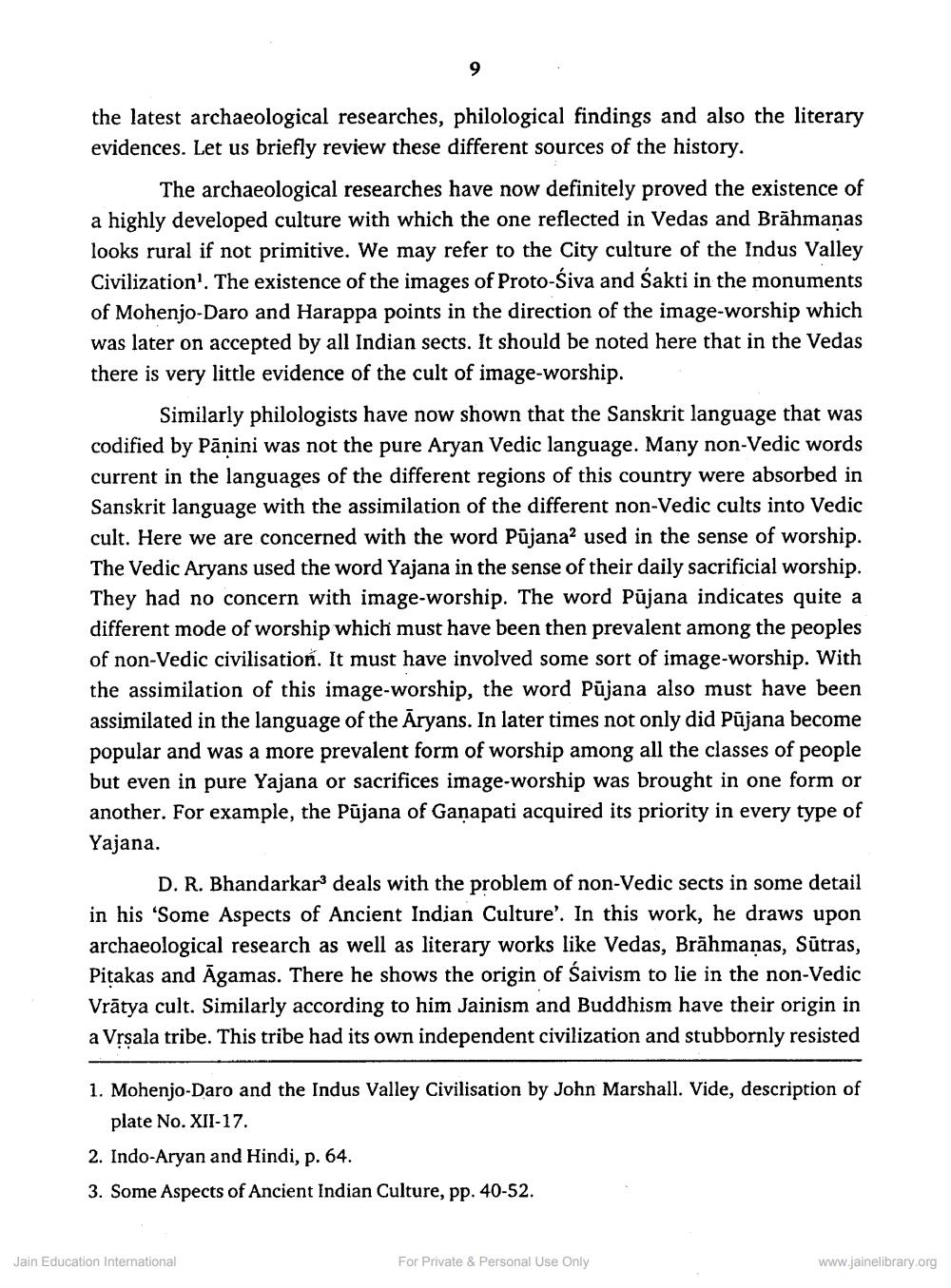________________
the latest archaeological researches, philological findings and also the literary evidences. Let us briefly review these different sources of the history.
The archaeological researches have now definitely proved the existence of a highly developed culture with which the one reflected in Vedas and Brāhmanas looks rural if not primitive. We may refer to the City culture of the Indus Valley Civilization. The existence of the images of Proto-Siva and Sakti in the monuments of Mohenjo Daro and Harappa points in the direction of the image-worship which was later on accepted by all Indian sects. It should be noted here that in the Vedas there is very little evidence of the cult of image-worship
Similarly philologists have now shown that the Sanskrit language that was codified by Pānini was not the pure Aryan Vedic language. Many non-Vedic words current in the languages of the different regions of this country were absorbed in Sanskrit language with the assimilation of the different non-Vedic cults into Vedic cult. Here we are concerned with the word Pujana? used in the sense of worship. The Vedic Aryans used the word Yajana in the sense of their daily sacrificial worship. They had no concern with image-worship. The word Pūjana indicates quite a different mode of worship which must have been then prevalent among the peoples of non-Vedic civilisation. It must have involved some sort of image-worship. With the assimilation of this image-worship, the word Pūjana also must have been assimilated in the language of the Aryans. In later times not only did Pūjana become popular and was a more prevalent form of worship among all the classes of people but even in pure Yajana or sacrifices image-worship was brought in one form or another. For example, the Pūjana of Ganapati acquired its priority in every type of Yajana.
D. R. Bhandarkar deals with the problem of non-Vedic sects in some detail in his 'Some Aspects of Ancient Indian Culture'. In this work, he draws upon archaeological research as well as literary works like Vedas, Brāhmaṇas, Sūtras, Pitakas and Āgamas. There he shows the origin of Saivism to lie in the non-Vedic Vrātya cult. Similarly according to him Jainism and Buddhism have their origin in a Vrsala tribe. This tribe had its own independent civilization and stubbornly resisted
1. Mohenjo Daro and the Indus Valley Civilisation by John Marshall. Vide, description of
plate No. XII-17. 2. Indo-Aryan and Hindi, p. 64. 3. Some Aspects of Ancient Indian Culture, pp. 40-52.
Jain Education International
For Private & Personal Use Only
www.jainelibrary.org




